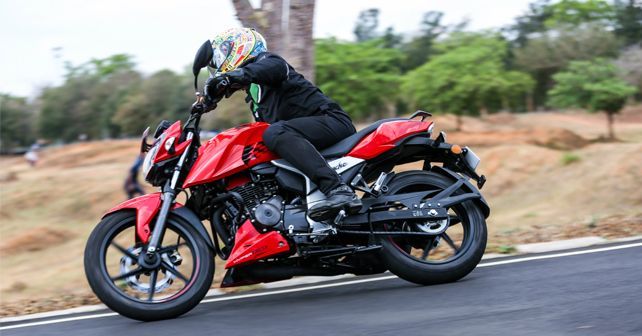
TVS may have taken their own sweet time to update the Apache RTR 160, but it seems that this time has been very well spent indeed.
Over the last few years, TVS has really upped their game – something that shows clearly in their products. A paradigm shift in TVS’s approach commenced with the launch of the Apache RTR 200 in 2016, but the company went quiet soon after. Now, with the launch of the much-awaited TVS Apache RR 310 in December last year and the TVS Ntorq 125 scooter in February this year, they seem to have stepped on the gas once again. In the midst of all this, the Apache RTR 160 remained somewhat ignored and – dare I say it – forgotten. In fact, it hasn't received a substantial update in almost a decade. With strong contenders like the Honda CB Hornet and the Suzuki Gixxer, TVS has lost a lot of ground in this period. Now, with the all-new TVS Apache RTR 160 4V, TVS intends to recover much of this lost ground.
Familiar face
Owing to the fact that the new RTR 160 4V shares its design with the Apache RTR 200, it does look familiar but by no means drab or dated. The headlight, front mudguard, fuel tank and the underbelly are straight lifts from the 200. However, there are a few aspects that easily set the RTR 160 4V apart from its elder sibling. In line with the motorcycle's commuter-centric nature, TVS has fitted it with a single-piece seat as opposed to the split seats and a taller handlebar instead of the 200’s clip-on. The side panels and the tail section have also been mildly altered. The RTR 160's alloy wheels – although of the same size – have a standard five-spoke design. And while the 200 comes only in matte colour options, the RTR 160 4V is available only in gloss colours.
Heart transplant
In terms of engine, the TVS Apache RTR 160 4V is among the most powerful motorcycles in its class – producing 16.6bhp at 8,000rpm and 14.8Nm at 6,500rpm in its fuel injected form. TVS also offers a carburetted version of the RTR 160, which, at 16.10bhp, makes marginally less power. The torque rating remains unchanged though. While the engine of the new 160 is the same as its predecessor, it now has four valves instead of two – which means better combustion and more power.
We first got our hands on the carburetted version of the bike. Interestingly, despite making slightly less power than the FI, it feels quicker from the word go. In fact, even when you push it harder and closer to its claimed top speed of 113km/h, the carburetted RTR 160 feels at ease. Sadly, this is not the case with the fuel-injected variant – it seems to lack that fluidity. At the TVS test track in Hosur, the former clocked an indicated top-speed of 120km/h, while the latter was often stuck around the 115km/h mark. As far as the engine itself is concerned, the vibrations have been smoothed out well – especially in comparison with the outgoing model. That being said, between the carb and the FI, the latter feels noticeably more refined. Both versions come paired with a 5-speed transmission. The gearbox has been tuned well, and while the ratios are short the RTR 160 can easily putter around at 35km/h in the top cog without much knocking.
Comfort and corners
Knowing its audience well, TVS has crafted the RTR 160 with their comfort in mind. The single unit seat is comfortable and has ample of space for the pillion as well. Cushioning isn’t firm nor too soft which is ideal for long hours of riding. A taller handlebar also ensures a more upright and comfortable riding posture.
TVS has fitted the RTR 160 4V with telescopic forks up front and a monoshock at the back – both developed and tuned by Showa. Although we didn’t get to ride it on the street, we expect it to offer a plush ride even on bad roads. On the track though, the rear suspension felt soft in its default setting – making it a bit nervous when faced with mid-corner bumps. However, if you need it to be a bit more corner-friendly, you can tweak the rear monoshock as it’s preload adjustable. In both variants, the performance of the brakes is satisfactory – except for the fact that they could have had better feel.
Verdict:
An update to the TVS Apache RTR 160 was long overdue. With the right combination of looks, comfort and performance, TVS seems to have understood the segment perfectly. The RTR 160 comes in three variants – two carburetted trims, without and with a rear disc, and a fuel injected version. Ranging between Rs. 81,000 and Rs. 85,000, the carburetted versions are priced on par with the competition. The same cannot be said about the FI trim though, especially when the base RTR 200 demands just about Rs. 5,000 more. As a product, TVS has ensured that the RTR 160 4V incorporates everything that’s good about the 200, while offering a great performance commuter.
It’s taken TVS a long time to update the TVS Apache RTR 160 4V , and it’s safe to say that the updated version is worth the wait. Like all their new-age products, TVS has managed to get this one spot on too!




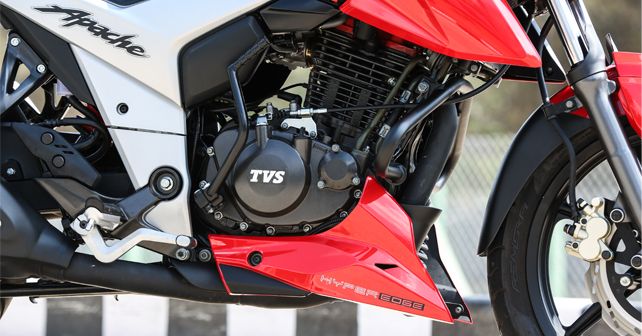
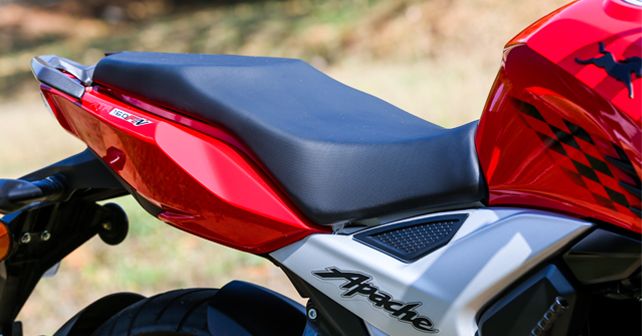

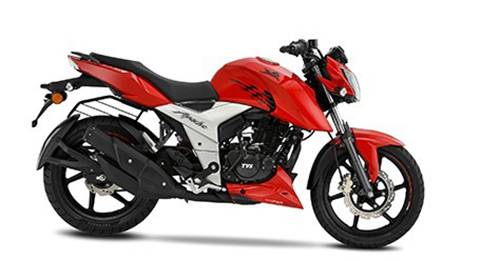

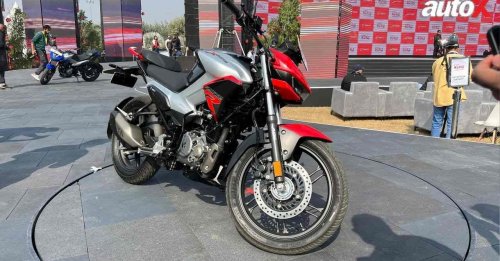


















Write your Comment